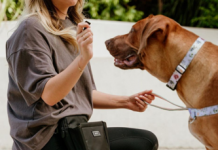What is thought to be the first dog day care opened in New York City in 1987. Dubbed Yuppie Puppy Pet Care, Inc., it was founded by a dog walker named Joseph Sporn. The business grew out of Sporn’s work with dogs, first as a dog walker and vet tech. It started as a dog sitting business in his apartment and eventually grew into a daycare center in the basement where the dogs were uncaged and allowed to roam and play with each other, watch TV, play outside, and keep cool in the air conditioned facilities.
The Dog Daycare Industry
Eventually Sporn’s company evolved into a multi-million dollar business, and since that time doggy day cares have sprouted all over the country. Many people work very long hours and worry about leaving their dog home alone all day. Dogs are very social and long to socialize with other dogs, but most of all dogs enjoy the company of humans. Leaving dogs home alone can cause behavior issues such as separation anxiety, destruction of furniture, carpets, woodwork, and doors. As a result many pets are put on medication to ease the symptoms of anxiety in dogs.
What to Expect At Dog Daycare
Should I use Dog daycare? Doggy day care is not for every dog. Dogs with behavior issues that do not mix well with other dogs, and other people, may not be accepted, which is understandable due to the structure of day care which involves both other dogs and people. Many people ask whether they should place their dogs in a kennel that don’t get along with other dogs. But for the dog that gets along well with others, but needs more stimulation, interaction, and exercise, day care is a great alternative to leaving your dog at home alone during the day. Unfortunately, dogs with guardians who work long hours during the week will have precious little time together until the weekend.
Day care for dogs is structured very similar to children’s day care. Dogs are dropped off in the morning and picked up in the afternoon. Hours, though they may vary from one day care to another, are also similar to childcare centers. Most day cares open between 6 and 7 a.m. and run for twelve hours.
There are usually several options to choose from, such as full day, half day, and drop-ins. Rates vary accordingly, and also from place to place.
Customary Costs of Doggie Daycare
Naturally, costs vary from center to center, and are also influenced by geographical area. In a large metropolitan city, rates tend to be higher, while rural centers are generally lower. Cost is also tied to the facility itself and the amenities. Most centers offer extra services for an additional cost, such as grooming, giving meds, and extra play time.
A half day usually consists of a five hour span and can cost from $6 to $25. A half day is less expensive and still gives your dog a block of time to run and play with other dogs and interact with day care workers. Grooming can be worked into this time if your center offers that service.
A full day will run you between $12 and $38. Anything longer than a half day is charged the full day price, meaning if your dog is there from 7 a.m. until 5 p.m the price is the same as for 6 a.m. until 6 p.m. Rates by the week or month are usually discounted and run between $240 and $550 for the monthly rate. Many centers have an application fee, and most have a charge for picking up late, as do most child care facilities.
Weight The Pros and Cons Of Doggie Daycare
There are many benefits to doggy day care for your dog, and, if you can afford it, it can be a great option for keeping your pet occupied and burning excess energy so that the two of you can enjoy the evening together. Is doggy daycare for you? Check out your local centers, ask around to see who you know that utilizes a daycare, and get recommendations and impressions. Despite the cost, doggy day care can be a solid solution to the problem of your dog being home alone.













[…] Pet sitters are professionals who come into your home to feed, walk, play with and essentially look after your four-legged companion while you’re away. Hiring someone to take on this role is a task you shouldn’t take […]